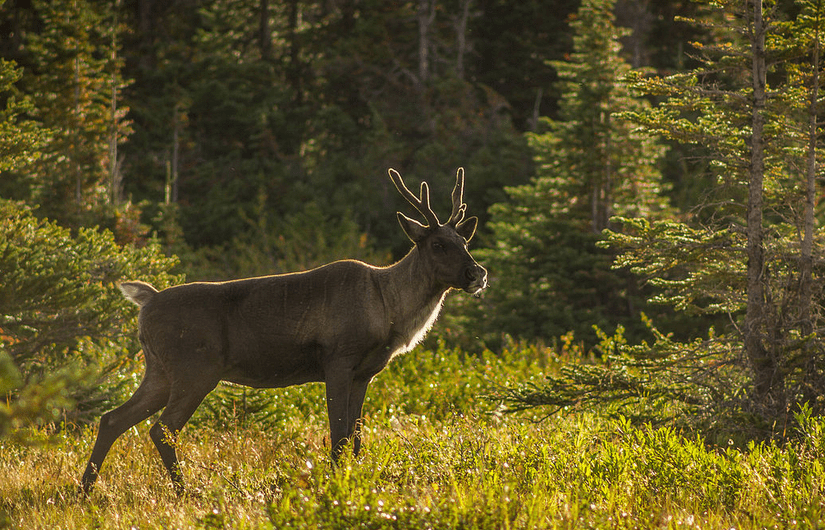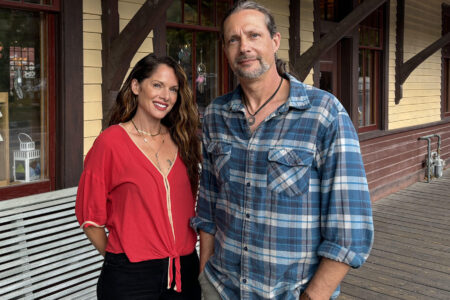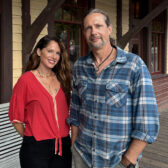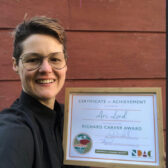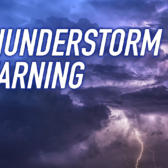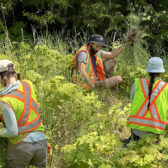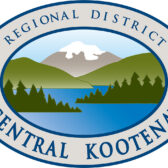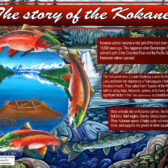Logging continues in ‘critical’ mountain caribou old growth forest: Valhalla Wilderness Society
The province’s choice to continue to log old growth forest in B.C. is not only endangering mountain caribou but also the environment and its people, says a local conservation group.
Craig Pettitt, chair of the Valhalla Wilderness Society, said the provincial government has put the welfare and survival of the “deep snow” mountain caribou — otherwise known as the southern mountain caribou — and old growth forests behind logging profits.
“This same old-growth forest is critical for removing carbon from the air and reducing climate change,” he said in a statement May 2. “B.C.’s continued logging of old-growth forest is endangering us all by contributing to more extreme weather, wildfires and floods.”
With the third largest herd of southern mountain caribou in existence — around 184 animals — the North Columbia herd is one of the last, best chances for saving the species, said Pettitt.
But of the 1,917 hectares of active logging in federally-designated critical habitat for the Columbia North herd — active logging refers to approved cut blocks throughout operations, from logging to replanting — 1,764 ha. are old-growth forest 140 years or older, explained Pettitt.
As well, 121.7 ha. of the active cut blocks occur in ungulate winter range, land legally designated as “no logging.” However, loopholes exist that allow companies to log and build roads inside those ranges if need be.
“The amount of current active logging isn’t a true measure of the ongoing loss of the UWR. Its boundaries have been reduced by amendments several times,” said Pettitt. The Province “has been petitioned repeatedly to enforce the Species at Risk Act (SARA) and order B.C. to protect critical habitat, but it refuses to do so, rendering the SARA meaningless.”
What is their status?
About 98 per cent of the world’s 2,500 mountain caribou live in B.C., where they are on the provincial Blue List — meaning they are considered to be vulnerable or sensitive, and require special management to ensure their survival.
“For conservation and management purposes, wildlife biologists have divided these 2,500 animals into 13 herds, ranging in size from about 20 to 450 animals.
“Seven of the smaller sub-populations are isolated from others, so that caribou seldom move between them. Such herds are particularly at risk because random events like avalanches, hard winters, or a few years of heavy predation could eliminate most or all of a small herd, with little chance for replacement from other sub-populations.
“In contrast, six of the sub-populations are larger and occur right next to others, so they have much less risk of disappearing in the immediate future. No one knows how many mountain caribou lived in this province historically, but it is clear that some areas where they once lived have been abandoned.
“One estimate is that about 60 per cent of their historic range in British Columbia and the United States no longer supports mountain caribou.
“Land use plans throughout the mountain caribou’s range recognize their vulnerability, so there are now guidelines for special resource management where they live. These guidelines mainly affect the rate and type of forest harvesting.
“The goal is to retain enough old-growth forest to meet the caribou’s needs, while still allowing some logging. Slightly different approaches to managing mountain caribou have been taken in different regions, so a provincial strategy is now being developed.
“This strategy will coordinate efforts to maintain or recover mountain caribou throughout their remaining range. There is no hunting season on mountain caribou.”
Source: excerpt from “Mountain Caribou” by B.C. Ministry of Environment, Lands and Parks


